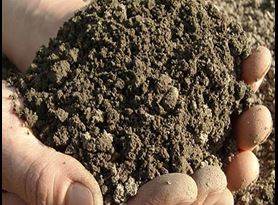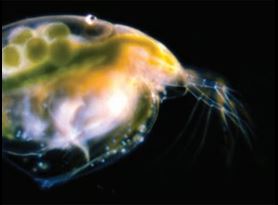How to Interpret Drinking Water Analysis Reports
Total coliform bacteria, nitrate, pH, hardness, and total dissolved solids all affect water quality and are reported in a drinking water test report.
Though other contaminants can be analyzed, testing for them can often be expensive and unnecessary. It is more important to test drinking water on a regular basis for a few indicators of contamination and to maintain good records.
An explanation of the terms often appearing on drinking water analysis reports is shown in this Fact Sheet. Tables showing the EPA Maximum Contaminant Levels (MCL) and Secondary Drinking Water Regulations (SDWR) for some of the analytes are on the back of this sheet. MCLs are the highest level of contaminant allowed in drinking water. SDWRs are non-enforceable Federal guidelines regarding cosmetic or aesthetic effects.
Total Coliform
This is a bacteriological analysis that indicates if a drinking water supply has been contaminated with human or animal waste. If the result of this test is positive, the water should not be used for human consumption unless it is boiled for five minutes or disinfected by other means.
pH
A pH of less than 6.5 can cause health problems. Municipal water supplies are usually adjusted to values between 8.0 and 10.0. Highly acidic water can be corrosive and may dissolve metals from pipes, pumps, and other fixtures. SDWR standards suggest a pH range between 6.5 to 8.5 for drinking water.
Hardness
Water containing excessive levels of calcium and magnesium is said to be “hard”. Hard water does not affect health but can cause scaly deposits to form in pipes and water tanks. It is desirable that water tests below 150 mg/l hardness and not higher than 500 mg/l.
| Hardness Ratings* | mg/l | Grains/Gallon |
| Soft | less than 2.9 | |
| Moderately Soft | 50 to 100 | 2.9 to 8.8 |
| Hard | 150 to 300 | 8.8 to 17.5 |
| Very hard | >300 | >17.5 |
It is desirable that water tests below 150mg/l hardness and not higher than 500 mg/l.
Electrical conductivity (EC) and total dissolved solids
Electrical conductivity (EC) measures the soluble salt concentration in mmhos/cm and is used to calculate the total dissolved solids (TDS) in water supplies. The EC should not exceed 0.78. Water containing more than 500 mg/l of total dissolved solids is not recommended for human consumption.
Nitrate (N)
A high concentration of nitrate can be fatal to infants and a threat to young farm animals. High levels may occur near manure piles, fertilized fields, or subdivisions using septic tanks. Levels should not exceed 10 mg/l Nitrate (N) or 1 mg/l Nitrite (as N).
| Maximum Contaminant Levels | |
| Arsenic (As) | 10 ug/l |
| Flouride (F) | 4 mg/l |
| Cadmium (Cd) | 5 ug/l |
| Lead (Pb) | 15 ug/l |
| Copper (Cu) | 1300 ug/l |
| Mercury (Hg) | 2 ug/l |
| Secondary Drinking Water Regulation Levels | |
| Chloride (Cl) | 250 mg/l |
| Sulfate (SO4) | 250 mg/l |
| Iron (Fe)** | 0.30 mg/l |
| Zinc (Zn) | 5 mg/l |
| Manganese (Mn)** | 0.05 mg/l |
Water Treatment Methods
|
Absorption Filter |
Reduces poor taste, bad odor, turbidity, chloride, radon, organic contaminants, iron, and arsenic. | ||
| Reverse Osmosis | Reduces dissolved inorganic and some organic contaminants. Reduces various cations (i.e. lead, chromium and cadmium). | ||
| Ion Exchange | Reduces calcium, magnesium, barium, nitrate, fluoride, and other mineral levels | ||
| Distillation | Removes all but volatile contaminants. Inactivates or removes pathogens. | ||
|
Water Softener |
Reduces hardness and may remove manganese and small amounts of iron. | ||
| Chlorination | Removes iron, manganese, and any iron or manganese-related bacteria. It is more effective in Removing iron in dissolved or precipitated forms if it is followed by filtration. |
Drinking-Water Sample Collection
Drinking Suitability
Locate a sampling point near the well, before the water sampler. Turn on the water and allow it to run long enough to flush the system out with water. If a coliform test is required, turn off the water and pass a flame back and forth over the outlet to sterilize. Turn on the water at a moderate flow rate. Carefully fill a sterile container and reattach the lid. If other drinking suitability tests are required, fill a second container from the running faucet and seal the lid. Samples should be refrigerated after collection and transported to the lab within 24 hours.
Lead and Copper
Sample at the kitchen faucet or from wherever most drinking water is taken. The sample should be collected first thing in the morning, before anyone has drawn water. Fill a 1-pint container directly from the faucet without allowing the water to run first. If any of the above tests are being run, a separate sample should be taken for lead and/or copper.
Abbreviations, Conversions, and Equivalents
| > | more than | No3-N | NO3 x 0.226 |
| less than | SO4 -@ | SO4 x 0.333 | |
| mg/l | milligrams per liter | TNTC | too numerous to count |
| mmho/cm | unit of conductance | 17.1 mg/l | 1.0 grain/gallon |
| ug/l | micrograms per liter | EC | electrical conductance |
Element provides drinking water testing to ensure potable water is safe for human consumption and meets regulatory requirements.
For more information on our drinking water testing and analysis, or to speak to one of our Engaged Experts, please contact us today.
Find related Resources
More from Element

Environmental Compliance Testing
Element's environmental labs operate extensive route and field sampling services, enabling us to quickly and efficiently route your sample to the lab best suited to meet your needs.

Soil Testing
Our engaged experts use the latest technologies to provide soil testing and analysis that helps you understand your performance against environmental best practice and regulatory benchmarks.

Air Emissions
Element offers a comprehensive suite of services to help companies comply with these air quality regulations, including accurate sampling, analyzing, and measuring organic compounds, metals, and other toxics in source emissions.

Aquatic Toxicity Analysis Services
Element has the experience, knowledge, dedication and expertise to service all of your bioassay testing needs.

